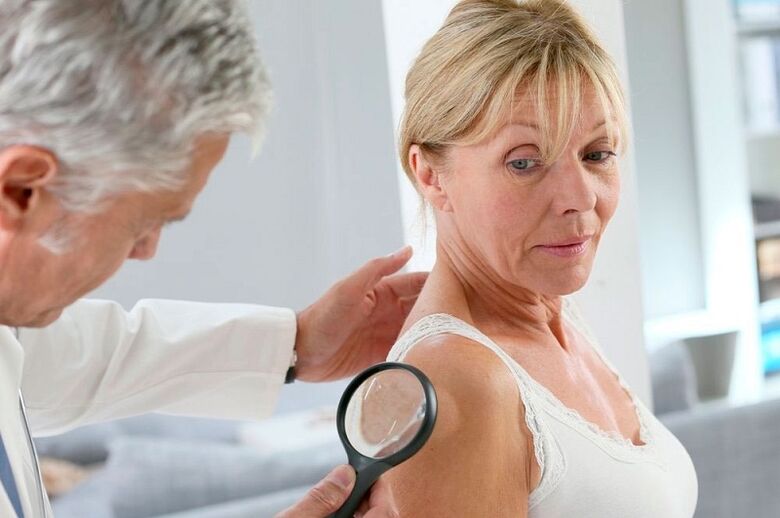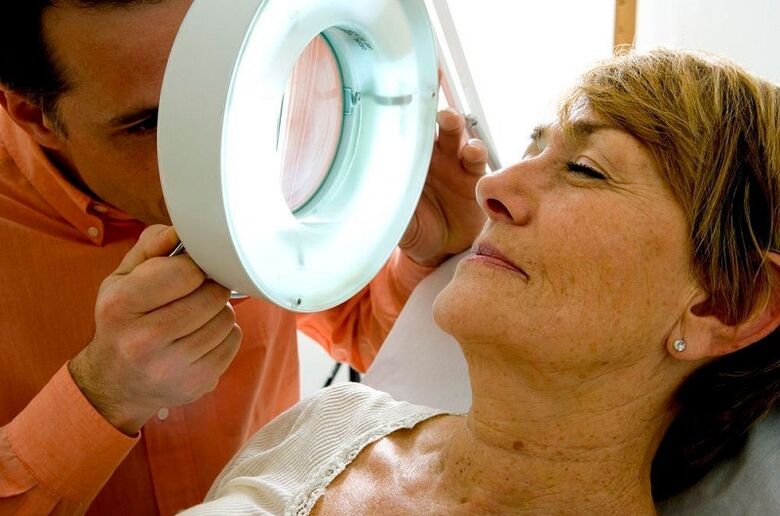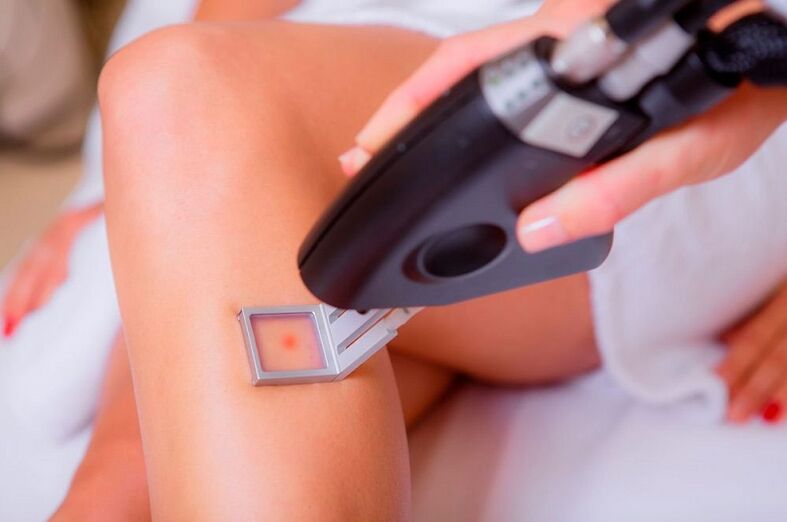Papilloma is a benign growth on the skin or mucous membranes caused by one of the many types of viruses in the Papovaviridae family. Human papillomavirus, or HPV, is the generic name for a group of uncoated DNA viruses that are transmitted in a variety of ways. HPV infection can occur during sexual intercourse, with microtrauma to the mucous membranes and skin, during childbirth (from an infected mother to a child).
Human papillomavirus in adults

Human papillomavirus (PVI) infection is quite common. Numerous studies show that over 80% of the young population are carriers of this. The infection, entering the body, affects the squamous epithelium of the skin and can multiply in it for years. Its various types, affecting the mucous membranes, cause the appearance of conjunctival, oral and genital benign formations.
Papillomas in women
Human papillomavirus infection is equally threatening for both men and women. But some types of pathogens pose a great danger to women's health and lives. Numerous studies show that HPV can cause cervical cancer.
Papilloma virus in pregnant women
Sudden weakening of the immune system and hormonal imbalance can provoke active reproduction and symptomatic manifestations of the papilloma virus, which has long been inactive in the body. During pregnancy, the appearance of papillomas on the skin and mucous membranes can scare expectant mothers. In this case, the woman needs an urgent consultation with a gynecologist.
HPV is not a contraindication to conception, although the baby is more likely to be infected during birth.
Papillomas in men
Papilloma in men for the most part does not give clinical manifestations. But men are at the same time a source of infection and infecting their sexual partners. In the normal state of the immune system, the activity of pathogenic microorganisms is reduced to zero. But with immunodeficiency, the situation can change and the presence of papillomavirus in the blood will begin to be active and in some cases aggressive.
The type of sexually transmitted infections that cause genital warts affect both men and women equally. HPV 16 and 18, which can cause cervical cancer in women, are rarely found in men. Once in the body, the papilloma virus of this type remains in the urethral canal for some time, after which it is eliminated due to the lack of a favorable environment for its reproduction. Genital genital warts in men can occur:
- most often on the coronal sulcus and the nodes of the penis;
- much less often on the body of the penis or on the head;
- in the area of the outer opening of the urethra;
- in the urethra itself;
- in the perianal area and in the anal canal.
Compared to women, papilloma in men rarely causes cancer. Diagnosing HPV in the male body is also difficult.
Human papilloma in children

Papillomas in women and men, as well as in children, affect all organs with integumentary or transitional epithelium. This can be the skin, mucous membranes of the mouth, pharynx, respiratory tract. Transmission of human papillomavirus in childhood occurs:
- during the period of intrauterine fetal development;
- when the child passes through the mother's birth canal;
- contact-household way from parents to baby;
- in the team (kindergarten, school, sports sections and development sections).
But even if the child is infected, the papilloma virus from the body can be eliminated after a certain period of time. If this does not happen immediately after puberty, in many cases the papillomas on the body and mucous membranes disappear.
Papillomas on the body
The most common in children are the clinical manifestations of human papilloma in the form of common or vulgar warts. They are usually located on the inside and back of the palms or in the knee area. But often the appearance of papillomas with a protruding keratinized surface on any part of the body. They do not cause discomfort and are painless. In case of injuries, such formations can start to injure and bleed.
Papillomas in children of the laryngeal mucosa

The most common diagnosis in children if human papillomavirus is present in their body is laryngeal papillomatosis. If the infection occurs during birth and the infection is passed from mother to child, its external manifestations are usually observed before the baby is five years old. The cause of laryngeal papilloma is the penetration of HPV types 6 and 11 into the child's body.
Ways of infection, types of PVI and their manifestations
The papilloma virus is highly contagious. The ways of transmitting it are diverse, which significantly expands the number of people at risk. More than one hundred varieties of papilloma pathogens are divided by modern medicine into different types, characterized by their own routes of transmission, external manifestations and level of damage to health.
How human papilloma is transmitted
Infection with papillomavirus can occur during sexual intercourse, through the household or during childbirth, in which pathogenic microorganisms are transmitted from mother to child. It is also possible for a person to become infected with one of the papilloma viruses. Autoinoculation can occur with mechanical damage to the skin or mucous membranes, for example during hair removal.
Papillomas: causes of infection through sexual intercourse
The causes of papillomavirus infection can be different. But one of the most common is sexual transmission. In addition, you can become infected not only with vaginal, but also with anal and even oral intercourse. There are about 40 types of papillomavirus, the reasons for the transmission of which are frequent change of partners and early onset of sexual activity.
Home transmission of the virus
The insidiousness of HPV is that there is a high probability of its transmission in the household. Several factors can increase the risk of contracting the papilloma virus, the reasons for this are different, for example:
- the presence of cuts and scratches on the skin, as well as excessive dryness of the skin with the appearance of cracks;
- diseases that weaken the immune system (HIV infection, influenza, herpes);
- long-term use of drugs with strong action that suppress the function of the immune system.
Infection of babies during birth
Like many genital infections, the papilloma virus can be passed from mother to child during birth. Also, the baby can become infected during the prenatal period. If a pregnant woman carries HPV type 6, 11, 16, or 18, the pathogens most commonly affect the baby's oral mucosa. These types of papilloma infections often cause the development of juvenile laryngeal papillomatosis.
Many women mistakenly believe that a cesarean section will help keep the baby from becoming infected. But even in this case, the likelihood of transmission of the papilloma virus still remains and pathogenic microorganisms can be transmitted through the placenta.
How the human papillomavirus manifests itself

HPV is a group of viruses that provoke the development of benign tumors in vivo and in certain factors leading to their malignancy. By location, papillomas can be cutaneous or anogenital. Such neoplasms may occur:
- Frequent warts, characterized by a dense, rough surface with additional growths. The size of such neoplasms is 1 mm. As a rule, their appearance is observed on the palms and fingers, in the area of the knee (mainly in children), but such papillomas can also be present on the body. The spread of common warts is facilitated by a rapid decline in immunity.
- Plantar warts that cause particular discomfort and pain. The causes of such neoplasms are several types of HPV: 1, 2 and 4. In appearance, plantar formations can be confused with ordinary corns. Their size is small at the beginning. But later the papilloma grows and additional growths may appear around it.
- Flat warts that appear in the presence of HPV types 3 and 10 in the body. Such neoplasms practically merge with the skin, may have a round or polygonal shape. Often their appearance is accompanied by itching, redness and soreness.
- Filamentous formations characteristic of carriers of the virus that have reached fifty years of age or more. Such papillomas can appear on the eyelid, body, armpit and others. Their length sometimes reaches 6 mm.
- Genital warts developing on the background of HPV 6 and 11. In women, such tumors can be localized in the anus and rectal mucosa, on the walls of the vagina, uterus and vulva, groin.
Types of papillomas

The main danger of the papilloma virus in men and women is that in modern medicine it is considered a carcinogenic agent. About a third of more than a hundred existing varieties of it affect the male and female genitals and cause the development of genital warts.
Cancer risk classification
Enveloped DNA virus can not only provoke uncontrolled division of skin cells and mucous membranes, but also contribute to the malignancy of tumors. However, not every papilloma leads to the development of cancer. Various factors can increase the likelihood of developing oncogenic diseases:
- earlier onset of sexual activity, frequent change of partners and preferences for anal sex;
- the presence of sexually transmitted infections that affect the genitals of both women and men;
- smoking and alcohol abuse, which negatively affects the state of the immune system and stimulates the appearance of papillomas in the intimate area and other parts of the body;
- the use of an intrauterine device as a contraceptive, as well as the prolonged use of oral contraceptives;
- endometriosis and other diseases of the female reproductive system.
To determine the type of papillomavirus will help to make a complete diagnosis, the need for which is determined by the doctor.
Non-oncogenic types of viruses
Among the huge variety of HPV there is a group of pathogenic microorganisms that do not pose a particular health hazard. Non-oncogenic types of HPV include papillomaviruses of genotypes 1, 2, 3 and 5. Their presence in the body causes the appearance of various types of warts on the skin.
- Common and flat warts on the hands and feet appear when infected with genotype 1 HPV.
- The genotype 2 virus causes flat and vulgar formations on the hands.
- HPV 3 causes uncontrolled cell division of the skin and the formation of flat and juvenile warts.
Low oncogenic risk viruses
Human papillomas with a low oncogenic risk develop when HPV 6, 11, 42, 43 and 44 enter the body. The most common viruses are genotypes 6 and 11. They account for about 90% of all infections. These types of pathogenic microorganisms cause the formation of a special type of genital papillomas - genital warts. Their location on the lining of the cervix or penis in men has a certain risk of malignancy.
Papillomavirus with high oncogenic risk
HPV genotypes 16, 18, 31, 33, 35, 39, 45, 51, 52, 56, 58, 59, 66 and 68 have a high oncogenic risk. More than 70% of infections are infections with viruses of types 16 and 18. Papilloma type 18 is common in the diagnosis of adenocarcinoma. Pathogenic microorganisms of this type provoke the development of cancer of the cervix, anus, vagina, vulva or male penis.
Classification of viruses by localization of manifestations

The external manifestation of papillomas in women and men can be observed on the skin of open parts of the body, on the soles of the feet, as well as on the skin and mucous membranes of the intimate area. The lesions can be local and in people with severe immune deficiency most often multiple foci of neoplasms are observed. Once the virus enters the body, three stages of its development can be noted:
- in the latent stage no clinical manifestations of infection are observed;
- in the subclinical form the symptoms and morphological signs are minimal;
- the clinical stage suggests the appearance of papillomas, dysplasias and malignant neoplasms.
The characteristics of the external manifestations depend on the type of virus that has infected the patient's body.
Papillomas of the neck
Papillomas of the neck of carriers of the virus can occur throughout their lives. Such formations are benign and provide only a person psychological discomfort. Also, small tumors on a thin leg can grab clothes, injure themselves, cause pain and bleeding. If such problems occur, it is advisable to remove the papillomas of the neck.
Papilloma in an intimate place
An intimate papilloma is called a genital wart. It can be localized in women on the vaginal mucosa or neck, in men - on the penis. Genital warts can also develop on the tissues of the anus. All types of papilloma viruses that infect the genitals can be divided into:
- viruses with a high level of oncogenicity (HPV 16, 18, 31, 33, 35), which significantly increase the risk of malignant neoplasms, but do not cause genital warts;
- papillomavirus with a low level of oncogenicity (HPV 6, 11), which causes the formation of genital warts.
Eyelid papillomas

Eyelid papillomas most commonly occur in adults who are carriers of HPV infection. They are usually located on the edge of the lower eyelid. The neoplasms may be in the form of cauliflower. The danger of such formations lies in their constant exposure to direct UV rays and the habit of rubbing the eyes with dirty hands. In the latter case, the risk of infection with papillomas in the eyelid increases significantly. The color of the neoplasm can be fleshy or dark.
Papillomas: treatment and diagnosis
Once inside the body, the papilloma virus can behave differently. The body's response depends on the type of virus itself, the state of immunity, the presence of concomitant diseases and other factors that are determined individually for each patient. So, there are three main types of behavior of the papilloma virus in the human body:
- Pathogenic microorganisms enter the blood and behave passively. In this case, a person is a carrier of the virus and can infect people who are in close contact with it.
- The virus enters the body but does not integrate into the chromosomes of the cells, but at the same time stimulates the uncontrolled division of the cells of the skin and mucous membranes and the formation of papillomas and warts.
- HPV penetrates cells, changing their structure and causing the formation of malignant tumors.
In each case, specific diagnostic and treatment methods are needed to identify the virus.
Diagnosis of human papillomavirus
The main type of diagnosis is an external examination of the patient. It is appropriate if the infection is manifested by the formation of papillomas (genital warts) on the external genitalia. To determine the presence of HPV in the laboratory and its type of help:
- PCR method. Such a test is highly sensitive to detect an infection that is in a subclinical or latent stage of development.
- Digen's test. Hybridization assay detecting 13 virus variants with high oncogenic potential and 5 with low oncogenic potential. As a rule, for a more accurate diagnosis of papilloma virus, the digen test is combined with cytological examinations.
In men, the diagnosis of papilloma virus is particularly difficult. Screening for male patients is not important. In this case, the diagnosis is possible only in the presence of external clinical manifestations of the disease.
Papillomas: how to get rid of external manifestations
If a person has papillomas on the body, the doctor will tell you how to get rid of them. Trying to deal with external manifestations on your own is not worth it, because it is fraught with dangerous health consequences, in particular infection. Removal of papillomas is necessary for several reasons, namely:
- some types of papillomas can grow and become malignant over time;
- the presence of neoplasms brings psychological discomfort to the patient;
- papillomas on the body and in the intimate area can be injured and bleeding.
However, only a doctor can determine the need to remove papillomas. To do this, you need to contact a dermatologist or dermatovenerologist.
Laser papilloma removal

The laser method for papilloma removal is highly effective. Using it allows you to quickly get rid of benign tumors. Laser cutting of formations with a diameter of about 5 mm takes only a few minutes. However, in some cases it may be necessary to remove the papilloma in several stages. The procedure is performed with the help of local anesthesia. Tissue removed by laser excision is not suitable for histology.
How to remove papillomas by the method of radio waves
Removing radio waves is an absolutely painless and quick way to get rid of papilloma. During the procedure, the tumor is cut in the area of its base. After its removal, a small dark crust remains in its place. The excised material is suitable for histological analysis. When deciding how to remove papillomas without the risk of scarring, the radiowave method is the best option for patients.
Removal of papillomas with liquid nitrogen
Speaking of the external manifestations of papillomas and methods of how to get rid of them, we can not fail to mention the removal with liquid nitrogen, otherwise called cryodestruction. This method of removing papillomas on the body is quite effective, but the likelihood of recurrence of external manifestations remains. During the procedure, low-temperature nitrogen affects the papilloma cells by freezing them. This method is characterized by minimal trauma and the absence of painful sensations.
Electrocoagulation
Electrocoagulation - removal of papillomas on the body through a targeted effect on the tissue of the neoplasm with a current discharge. This method is highly effective (80-95%). Its main advantage is that after removing the papilloma formation, no trace remains. Within a week, only a small crust remains on the skin, which disappears after the period. You can't tear it off on your own.
Medication treatment

Laser removal of papillomas or other methods recommended by a doctor are only a solution to external problems that cause aesthetic, psychological or physical discomfort. The methods of removing tumors have nothing to do with the fight against papilloma virus, the treatment of which requires an integrated approach.
Today there is no specific drug for the effective elimination of the papilloma virus from the body and treatment of its external manifestations. The complex approach to treatment practiced by medicine today is:
- removal of papillomas with laser, liquid nitrogen and other methods for excision of benign neoplasms;
- immunological therapy aimed at activating the body's natural protective functions;
- general strengthening of the body, intake of vitamin complexes, maintenance of a healthy lifestyle.
By contacting a doctor and going through all the necessary tests, you can confirm or deny the presence of papilloma virus in the body, learn how to get rid of tumors and reduce the risk of their recurrence.
HPV and immunity
Once in the body, HPV may not show up for a long time. Papillomas of the eyelid, neck, body or intimate area, which are external indicators of the activity of the virus, appear with a sharp decrease in immunity. Thus, the risk of papillomas on the neck, skin and mucous membranes in the body increases significantly with:
- transfer of infectious diseases or surgical interventions;
- period of pregnancy and lactation;
- constant stress, hypothermia and other factors that negatively affect immunity;
- long-term use of some drugs;
- the presence of genital tract infections.
All the factors that weaken the immune system can contribute to the multiplication of the virus in the blood. That is why it is important to know not only how to remove papillomas, but also how to strengthen the immune system, preventing their recurrence.
Papillomas: an alternative treatment
If you get a papilloma on your body, it is strictly forbidden to remove it yourself at home. For safe and effective treatment you should see a doctor. The specialist will prescribe the necessary tests and based on their results will develop a treatment regimen. According to this scheme, under the supervision of a doctor, the patient can treat papilloma virus at home.
HPV prevention
Prevention of papilloma virus through folk and traditional methods is to reduce the risk of infection. It also prevents the virus from multiplying in the body and the formation of the skin and mucous membranes of such external manifestations as papillomas in the intimate area, neck, eyelids, palms, soles of the feet, etc.
Prevention of human papillomavirus infection
So that one day you do not have to face the question of how to remove papillomas, you need to remember the basic measures to prevent infection with the virus. In intimate relationships with new sexual partners, the use of condoms and other contraceptives, unfortunately, does not protect the body from HPV. Only maintaining a monogamous relationship with a trusted partner can help reduce the risk of infection.
Traditional methods are not as effective as traditional methods of preventing papillomavirus infection. Modern scientists have developed several vaccines that significantly reduce the risk of infection with HPV varieties with high oncogenic potential (6, 11, 16 and 18).
The most appropriate age for vaccination is between 10 and 25 years. Its effect is calculated for approximately 6, 5 years.
Prevention of HPV manifestations

To prevent the activity of the papilloma virus is an effective alternative treatment with its recipes to strengthen the immune system. But before using them, you need to consult a doctor. Also, do not forget about such the most effective and safe methods to increase the body's natural defenses through sports, healthy eating, tempering.
Prevention of papilloma virus at home is available to everyone. Taking care of your health, do not forget to visit your doctor regularly for preventive purposes and to strengthen your own immunity.























